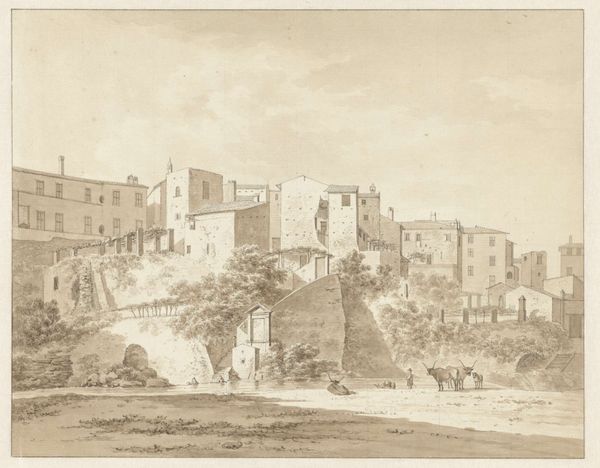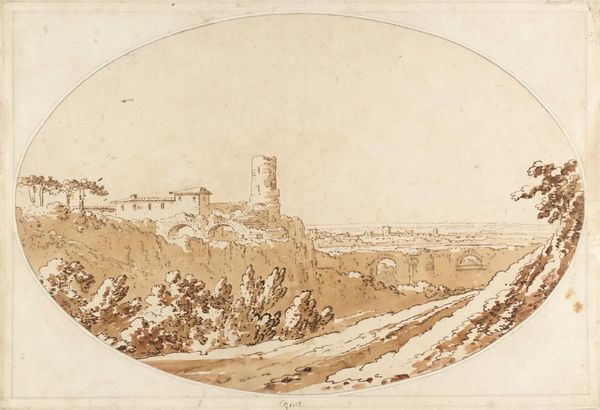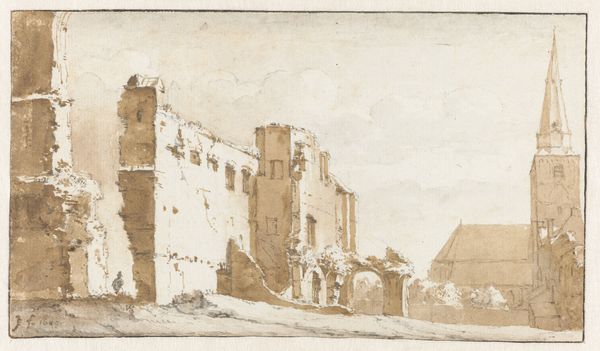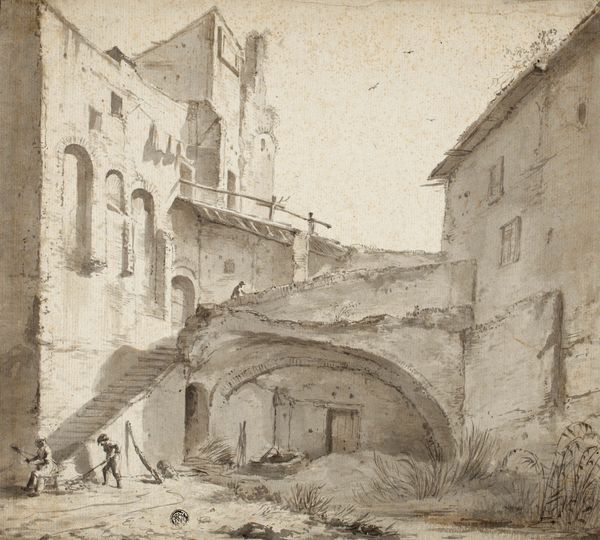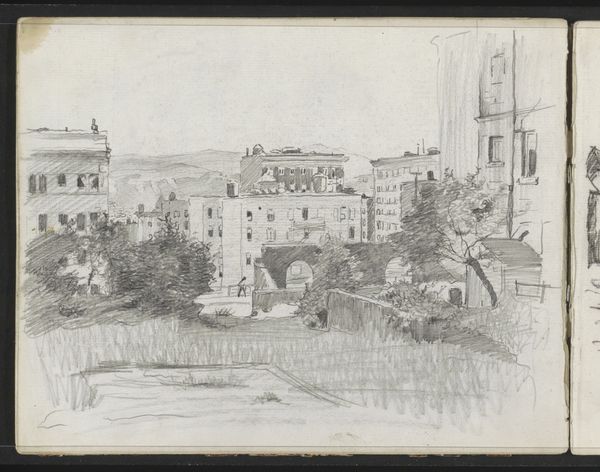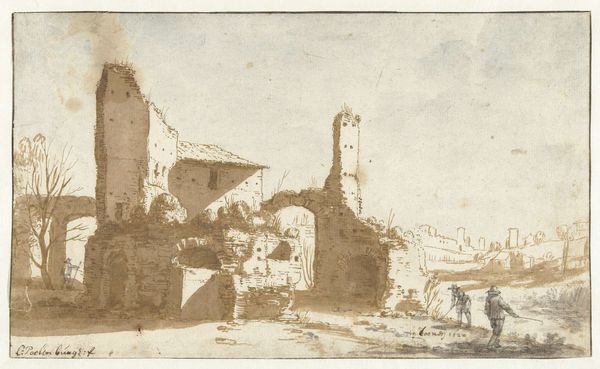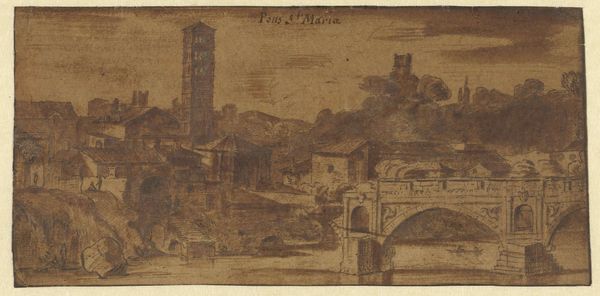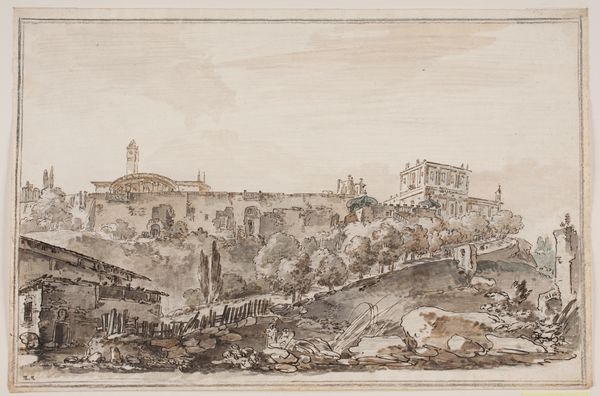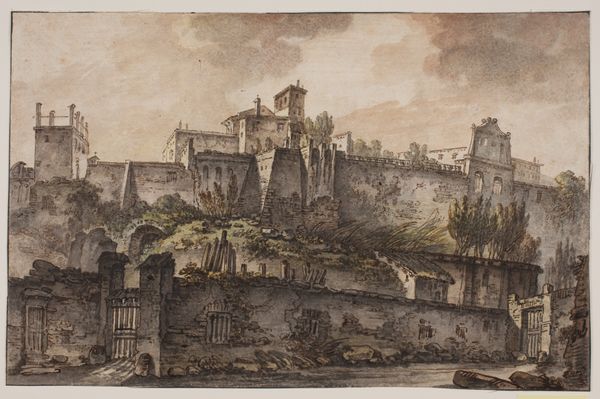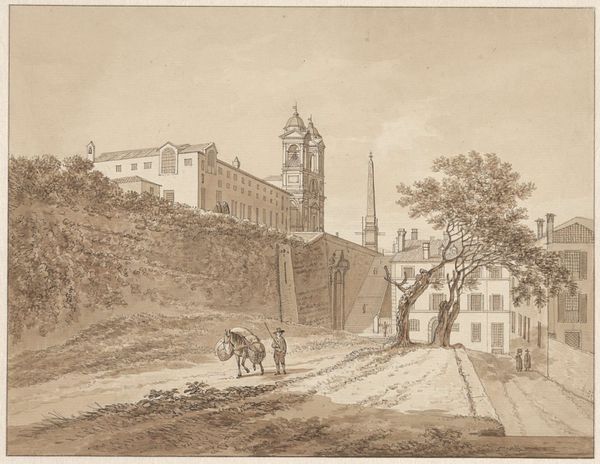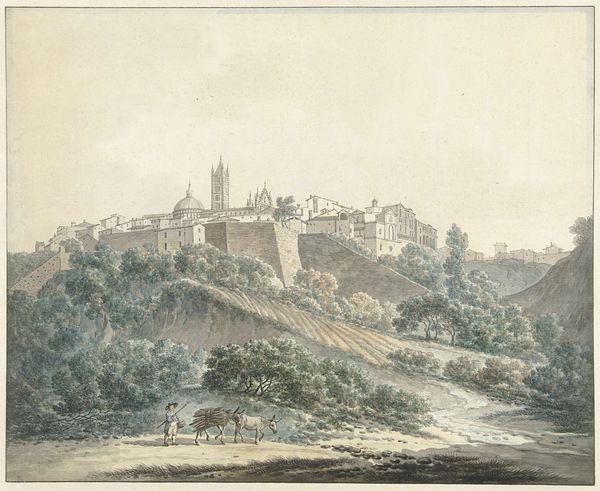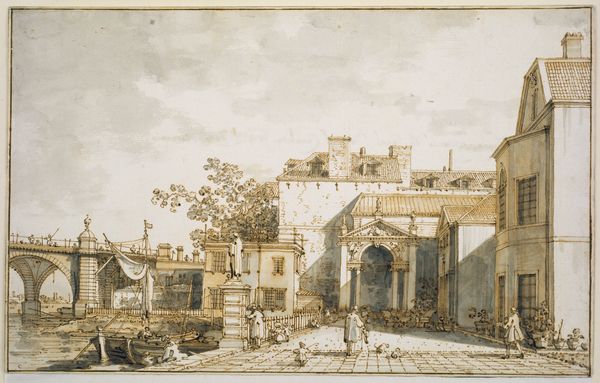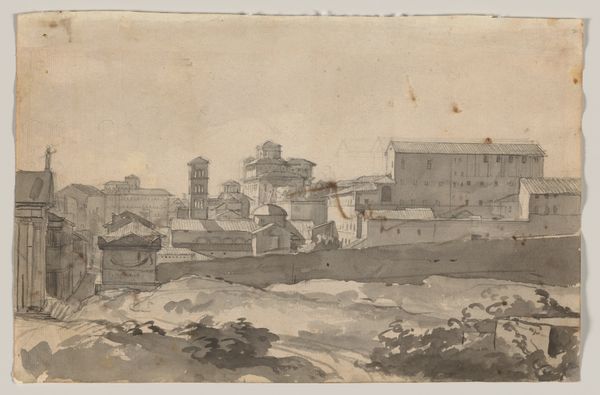
Dimensions: support: 79 x 122 mm
Copyright: CC-BY-NC-ND 4.0 DEED, Photo: Tate
Curator: Looking at this watercolor painting, I'm struck by a sense of tranquility, almost melancholy. The muted colors and soft washes give it a dreamlike quality. Editor: This is Thomas Girtin's "Lancaster Church and Bridge," a work held in the Tate Collections. It's a fascinating example of how topographical art served a public function, documenting places and shaping perceptions of the British landscape. Curator: It feels almost like a stage set, with the bridge and buildings acting as the foreground for the imposing church in the background. The human figures seem so small, dwarfed by the architecture. Editor: Precisely. Girtin was working at a time of significant social and political change. The church, depicted so prominently, represents not just religious authority, but also the established social order. Consider the politics of imagery here: what is Girtin suggesting about power and place? Curator: I see the reflection in the water adding another layer, almost blurring the lines between reality and representation. It invites us to consider the subjectivity inherent in viewing this place. Editor: Exactly. Artworks are shaped by these perceptions. It is important to consider how places are chosen, and the visual language used. Curator: It really makes you think about how we frame history and whose stories get told. Editor: Indeed. It is a reminder that even seemingly simple landscape paintings are embedded within complex cultural contexts.
